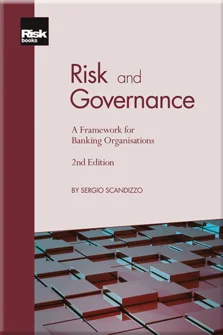Managing Legal Risk
Managing Legal Risk
Introduction: The Confluence of Risk and Governance
Corporate Governance, Information and Control
The Nature of Corporate Governance in Banking
Regulation and Governance
The Centrality of Risk Management
The Mission, Organisation and Governance of Risk Management
A Cartography of Banking Risks
Operations Risk in Extreme Market Conditions
Managing Legal Risk
Managing Reputation Risk
Drawing Boards: Motivations and Responsibilities in the Boardroom
Executive Compensation: Performance, Regulation and Ethics
Fair Value, Auditing and Internal Controls
Risk Management and the Role of Culture
The Board of Directors
Compensation
Auditing, Reporting and Disclosure
If it is true that all risks are ultimately credit risk, since all losses have to be eventually absorbed by somebody’s net worth, it is equally true that most of such losses end up in the courtroom or at least in lawyers’ offices (or both). The importance of legal risk grows with the overall risk exposure and becomes paramount in times of financial and market crisis. In this chapter, we will look at the definition and classification of legal risks as well as its key driving factors. We will examine the process of identification of legal risks and the possible methodological approaches to the assessment of such risks. We will then go on to describe the key elements of a management framework for legal risk.
DEFINITION AND CLASSIFICATION
There is an ancient Latin proverb that can be roughly translated as: “where the law is uncertain, there is no law.”11 Ubi ius incertum, ibi ius nullum, (Campbell Black, 1995). This suggests that the term “legal risk” contains something of an oxymoron. Historically, law is perceived as protection against risk – that is, against the uncertainty of abuse, violence and arbitrary rule, rather than a source thereof. The establishing of the rule of law
Copyright Infopro Digital Limited. All rights reserved.
As outlined in our terms and conditions, https://www.infopro-digital.com/terms-and-conditions/subscriptions/ (point 2.4), printing is limited to a single copy.
If you would like to purchase additional rights please email info@risk.net
Copyright Infopro Digital Limited. All rights reserved.
You may share this content using our article tools. As outlined in our terms and conditions, https://www.infopro-digital.com/terms-and-conditions/subscriptions/ (clause 2.4), an Authorised User may only make one copy of the materials for their own personal use. You must also comply with the restrictions in clause 2.5.
If you would like to purchase additional rights please email info@risk.net











